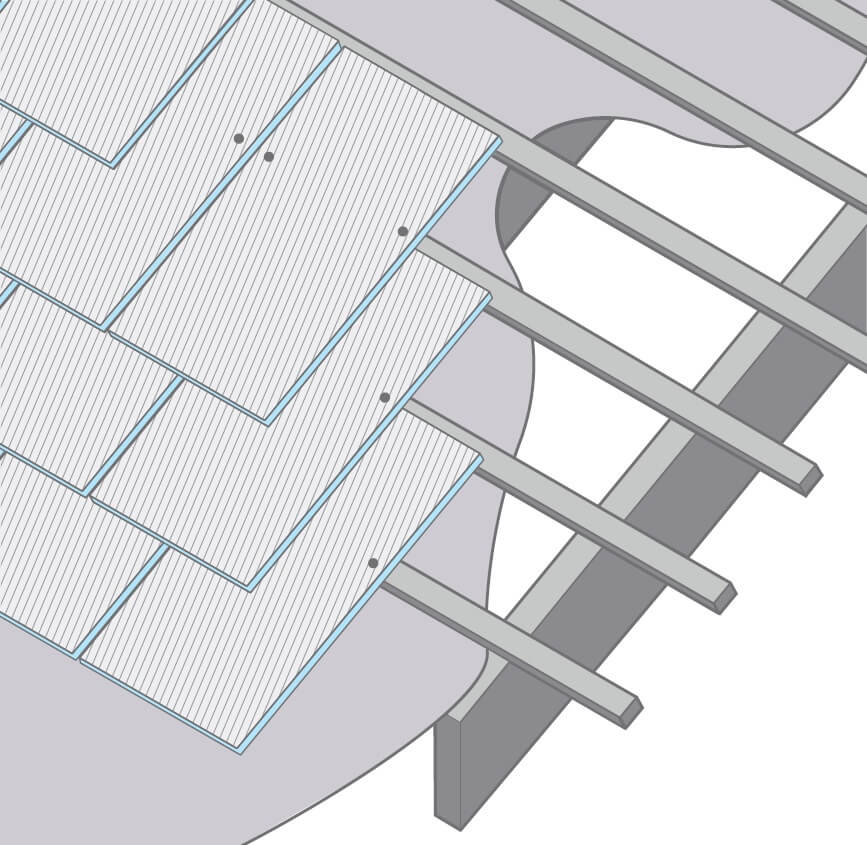The gauge is the spacing the roofing battens are set at when fixing natural slates.
Batten gauge for slates
To calculate the batten gauge, that is, the distance between battens, simply subtract the overlap from the length of the slate and divide the result by two.
The batten gauge can be calculated using the following formula:
Batten Gauge = (length of slate – lap) / 2
For example; for a 500 mm length slate installed with a 80mm lap, the batten gauge would be: (500 – 80) / 2 = 210 mm
Note: Ensure nails are not long enough to puncture membrane/felt.
Nails should be either aluminium alloy or copper, silicone bronze or stainless steel in coastal areas.

Holing gauges
This table allows you to determine the holing gauge (distance from hole to tail of slate) for your chosen slate length and lap.
| Holing Gauges in mm | ||||||||||||
|---|---|---|---|---|---|---|---|---|---|---|---|---|
| Slate Size | Lap mm | |||||||||||
| (Nominal) mm | 50 | 65 | 75 | 80 | 90 | 100 | 110 | 115 | 120 | 130 | 140 | 150 |
| 600 | 340 | 348 | 353 | 355 | 360 | 365 | 370 | 373 | 375 | 380 | 385 | 390 |
| 500 | 290 | 298 | 303 | 305 | 310 | 315 | 320 | 323 | 325 | 330 | 335 | 340 |
| 400 | 240 | 248 | 253 | 255 | 260 | 2265 | 270 | 273 | 275 | 280 | ||
| 350 | 215 | 223 | 228 | 230 | 235 | 240 | 245 | 248 | ||||
| 300 | 190 | 198 | 203 | 205 | 210 | 215 | ||||||
Battening and underlays
- The maximum centres for rafters or trusses on new build is 600mm. Some older structures might have rafter centres of 400mm.
- The minimum size of a batten for slating is 25x50mm.
- It is recommended that, once battens are fixed, every second perpendicular line is marked for slate joints.
- Slates should be laid with the thicker end as the tail, and correspond in thickness in each course. The thickest slates are fixed in the lowest courses and the thinnest toward the ridge.
- The slates are then fixed to the perpendicular lines, aligning the slate tails. A gap of 3–5mm between each slate is recommended.
If you have any questions, our experienced team on slate is at your disposal.

